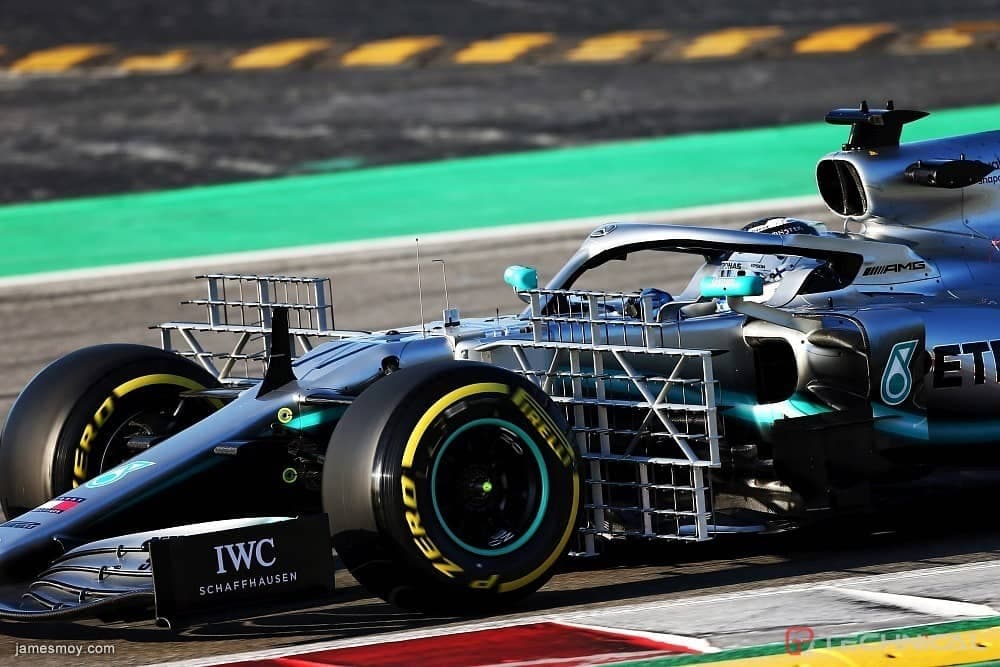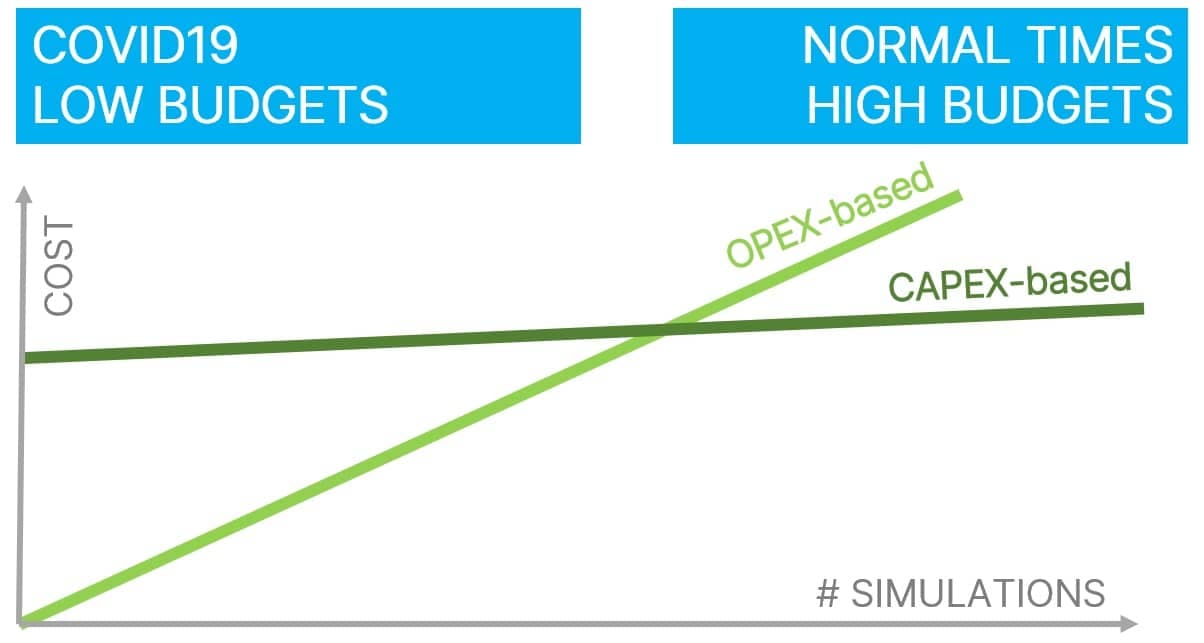📢Introduction
The world continuously changes, but the past months have been dramatically different. The new Coronavirus COVID-19 has, most importantly, cost many lives and created a lot of stress in many families.
It has also shocked economies around the world. Lockdowns have forced factories to close and people to work remotely, if at all.
So where does all this leave people working on aerodynamics?
❔Market demand
If you would have to list the top 10 global sectors that have been hit hardest by COVID-19, the automotive & aviation industry would both be in it or even take the podium. With hardly anyone buying a car when locked in their home and with continental & intercontinental flights reduced to almost none, you can imagine the challenges they face.
The racing segment had been hit particularly hard, with all races cancelled. But even now that Formula One has restarted, it's not the same without an audience (in terms of entertainment but also in terms of income!).
So where do you put aerodynamics on the priority list in such scenarios? Will you cut all non-necessary spending and do just what is needed to survive, risking long-term competitiveness? Or will you take a leap of faith and keep investing in innovation, risking cash problems if the economy does not recover quickly enough? Perhaps there is a middle ground.
☝Are Aerodynamics Essential?
Aero-centered products
There is little use for planes or drones that don't fly. So ignoring aerodynamics when it's at the core of your product is not an option. That's an easy choice.
But in reality, it is a lot more complex: if you're in racing, for example, will you maybe spend 30% less time on aerodynamics? The car will still go around the track, but perhaps just 0.1 seconds slower per lap. And that plane might still fly, but just 2% less efficient. Or less safe...
Most of these consequences are manageable in the short term. But if your competitor chose the other route, to double-down on development, you'll be losing ground in the mid-to-long term.
Aero-related products
For products where aerodynamics are not at the core, the story is different. If you're designing a bycicle helmet for amateur use, ignoring the aerodynamics might not be such a big deal. But then again, in such commodity markets, aerodynamics is one of the few remaining aspects to create differentiation for your product. Not taking aerodynamics into account might make your product look more average, less special.
🌬 Option 1 - the Wind Tunnel

It's no secret that despite our simulation platform we have a love affair with wind tunnels. They are a fantastic tool to get fast, real-life data.
But the track to get to that data can be lengthy and expensive:
- Make your 3D design
- Build & construct a prototype
- Build a test-plan (what to measure, at what angle, ...)
- Instrument the prototype
- Move the prototype & the team to the wind tunnel
- Run the tests
- Post-process the data
In this scenario, you could reduce the team size present at the wind tunnel test. Or double-down on rapid prototyping techniques to reduce throughput time & cost of the prototype. Or perhaps dig-up some of your old prototypes and tweak those, to learn more about new concepts you are creating. Or maybe you could even follow the test remotely if tasks are described properly to the wind tunnel team?
On the strategic side, there may be opportunities too: wind tunnels are known to be booked for months in advance, having you queue for a slot. Some may still have their first free spot only in 2021, but others seem to be having open slots. This could be your time to get ahead of your industry competitors, or perhaps the situation can have an impact on the cost of using a wind tunnel.
🏎Option 2 - Track Testing

If you're in the racing business, track testing is key: lap times & rider feedback are the final judgement of your development work as a team.
But track testing has its limitations - you need a moving laboratory! That means equipping your motorbike or racecar with sensors and data logging/transmitting capabilities.
Here, too, you may get creative: with empty race tracks, your test slot just became available. Or perhaps you could rent the equipment instead of buying it. A variable cost per test might be easier to digest for the finance department compared to a big investment.
⌨Option 3 - Simulation

You might get hit in the face (if you're lucky) by the company's budget controller if you ask for a 50.000$ CFD (computational fluid dynamics) license these days. As an engineer, it can be extremely frustrating to sit around & wait for a license to become available. I remember the first thing we would do when arriving at the office (when I was designing gearboxes 12 years ago) was to open up Inventor (the CAD package we used back then). Why? Because then you were sure you had a license to continue work for the rest of the day. But you'll still have to pay your engineers, whether they have a license available or not. So cutting back on licenses is not as trivial as it may seem.
So, then, what's the alternative? Well, over the past years we've seen many software providers implement cloud-versions of their software. Sometimes they work with tokens, sometimes it's a lease, ... Whatever the flavour is, the key point is that you can dynamically tweak the software needs to your team size & project phase.
- You don't need to run simulations this month? Perfect, then you don't need to pay.
- You need to run 50 simulations next month? Perfect as well, the scalable cloud is ready for you. An added bonus is that you don't need to invest in hardware to run all those simulations!
But even if you're not an engineer, this approach can pay off rapidly: pay-per-use platforms allow you to select exactly the app you need, whether that is a thermal, mechanical or fluid simulation.
Or you can choose an app tailored to your skillset: if, for example, you don't have an engineering or aerodynamics background and you still want accurate & fast aerodynamics results, you can opt for a platform like AirShaper that has the whole process automated.
💲OPEX replaces CAPEX

In general, it's difficult for companies to invest in the current economic climate. The return on investment is very uncertain and unless you're Apple, you probably don't have the cash to take that leap of faith.
So that favours options where you pay per use:
- Wind tunnels with flexible booking systems, remote test-it-for-you services, ...
- Tracks which offer measuring equipment for rent, track-side assistance per hour and perhaps even test-drivers on-demand? (I'll get shot for that last suggestion :) )
- Software solutions with a pay-per-use model, without any initial or monthly fee
In more general terms: OPEX (Operating Expenditures, which vary "per iteration") could be more interesting than CAPEX (Capital Expenditures) in these times.
💡Conclusion
The conclusion of this article goes beyond aerodynamics: not innovating will save you some cash in the short term but will cost you in terms of performance & market position in the long term.
So how can you still innovate in this uncertain climate? Look for solutions that favour OPEX over CAPEX and pay as you go to limit the risk!
The art of bootstrapping for startups could soon become common practice for corporates :)
More information:
How AirShaper Works
AirShaper Pay-per-Use Pricing
Run your own Simulation
